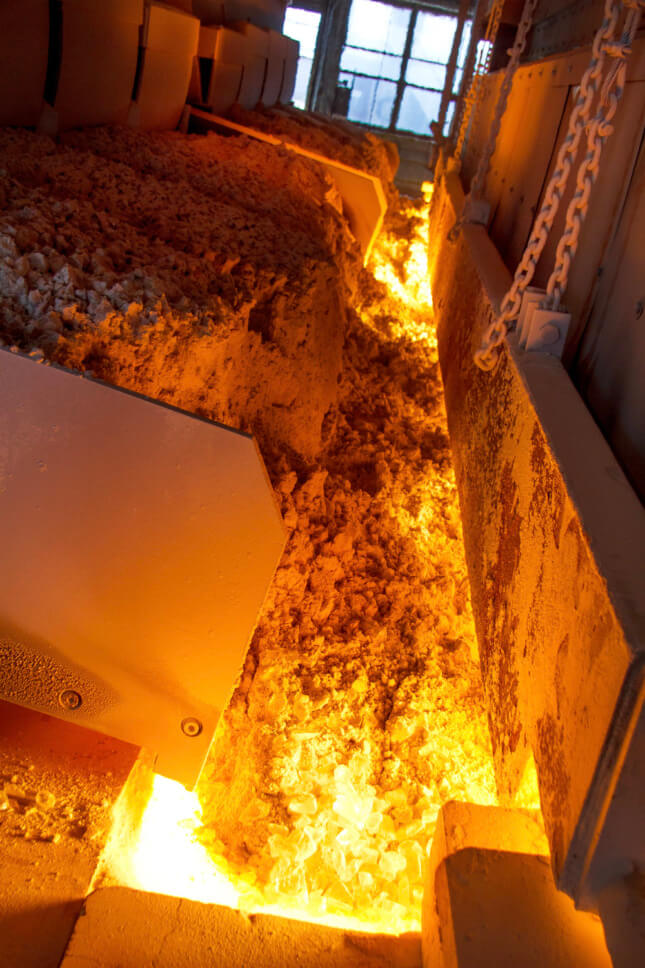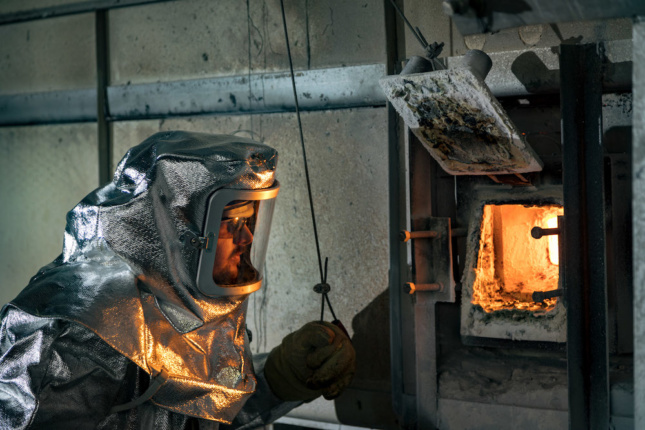Beginning in March, construction sites and manufacturing facilities around the country were shut down or sanctioned to limited operation per state-to-state regulation. As the coronavirus swept across the nation, essential businesses and manufacturing had to figure out how to maintain practices and production while most remained in quarantine. These temporary conditions were upheld by construction companies and manufacturers, but not without a high cost to the employees and the secondary business that rely on them. Most fabricators and construction workers either had to stop work completely or continue to work on a limited basis, with lower wages or for no profit at all. Nicole Harris, president of the National Glass Association (NGA), believes that essential manufacturers, like the glass industry, will be more affected by the reopening phases than the pandemic itself. In the following interview, she described how glass manufacturing will continue now that construction is unrestricted in most states and how these changes will impact fabricators and installers moving forward.
Gabrielle Golenda: How has COVID-19 affected the glass industry?
Nicole Harris: Glass manufacturing was deemed an essential business. That’s because they can’t close down these big furnaces, and also a lot of their products are going into safety applications. Hospitals and a lot of the essential businesses like food markets and pharmacies. A lot of them have storefronts with glass windows. Those are things that have to be repaired and replaced. Also, people are putting up new glass partitions to protect people from each other. Glass is an amazing product for that. It provides a barrier.
Specifically, how has it affected the NGA?
We represent the entire supply chain—the float glass manufacturers, the fabricators, the distributors, and the installing companies—who are either installing for commercial projects and or on in residential projects.
On the residential side, people get freaked out. To homeowners, let’s say you had a renovation going on, you’re going to have a new shower enclosure. Do homeowners want anybody in their homes right now that they don’t know? Probably not.
As for the commercial [sector], again our installing companies, some of them do storefronts and low-rise. Then there’s a whole other segment of the industry that just does all the high-rise work. They are guided by and restricted by the general contractors. And again, this is per locality, per city, per state. In New York City, the job sites shut down. In New Jersey, there are still people working. So, it really, really depends on where you are and what the general contractors are saying.
Since the production of glass is continuous, how has floating glass manufacturing been affected?
They’re going to continue to run there because these are continuous operations. They can’t shut them down.
Raw materials that make up the glass, like sand, run non-stop 24/7 into a huge oven. It stretches the length of three football fields, and you figure 1,100 feet for most float lines. They can, even with this kind of level of a big furnace, modulate the glass thicknesses. It depends on the application. You can have less than 2 millimeters, up to 22 millimeters. I’m sure you’ve seen inch-thick glass and you’ve seen all kinds of applications of glass. That’s all modulated while that ribbon is molten. All of those adjustments take a long time to make. You can’t go from doing a quarter-inch piece of glass to an inch in a matter of seconds.
They produce several hundred tons of glass a day. That’s anywhere from 15 years to sometimes even 20 years. That’s how long the special bricks and the special furnace can last before they have to stop production and re-rebuild everything.
The idea is that the inventories, the supplies are strong now and they were before going into this crisis. There’s not an issue about glass supply. It’s really about when the workers coming back. When do they come back online? Not even for the float glass manufacturers, but the installing companies, the drivers, the people getting the glass to the job site.

Do you need to find storage because there is more glass being made than specified?
Not yet. I don’t think that that’s happening, because the other thing that if push comes to shove, and this lasts way, way longer than everybody’s anticipating, the glass manufacturers could start to break the glass. So you’ve got this ribbon of glass they could break it and then just put it back in the furnace to remelt it. It’s not ideal, because you’re making all this glass and it’s perfect. To crush it and remelt it is not your first choice. But I don’t think we’re at that capacity level yet.
It’s really more about the workforce and the crunch time on job sites. A lot of companies have already started laying off their workers, right? If the job sites are closed and the factories are closed, then the fabrication facilities are closed.
There’re so many different ways to use glass. If all of those processes are closed down, or closing down, or slowed down because the construction sites aren’t taking workers, then nobody can build.
Currently, who has the highest demand for glass?
The essential businesses: hospitals, medical centers, testing laboratories, [and] manufacturers that are supplying medical supplies and equipment.
Is there a benefit for barriers to be glass over any other material?
After COVID is over, like everybody’s telling us, there’s going to be more pandemics and things like this going on. That’s when the versatility of glass is so key because it’s easy to clean, you can add antimicrobial coatings, and there’s natural light. All of the attributes and the versatility of glass are that much more important in a post-COVID world.

How quickly can you get everything back? When can these projects get finished? How is it going to impact future projects?
I think it’s going to affect how people decide to spend money. And I think that that’s going to affect all of us. Certainly magazines and trade shows. It’s like, “Can we afford to send people to something?” We have a big trade show coming up in the fall. I just want to make sure that this is all over by the time we get to GlassBuild in Las Vegas.
Is this going to affect new product releases or product improvements, or maybe what companies were planning on releasing at The Glass Show?
I think if anybody was going to be introducing a new product, they probably would’ve had it already done or pretty close to done at this point. Typically, every company, whether you’re a glass company or a supplier in the glass industry, your goal is to wrap up your revenues as quickly as you can because we’ve all been on hold now. Who knows how long that will last. The number one thing after you cut costs—because you can’t cut your way to prosperity—is to bring in money. The best way to do that is new products. The best way to do new products is being at a trade show, going to an event, sponsoring an event, advertising, and talking to architects.
How do you anticipate the coronavirus pandemic will affect future glass construction?
Once it all goes away, there’s going to be a huge demand. The challenge for our industry is that glass installation is the last on-site.
Every project, as you probably know, gets delayed. Who gets squeezed the worst? It’s the glass guys. It was always that way, and now I’m anticipating it’s going to get even harder. You’re doing an interior wall partition, I’m not saying they all do this, but the walls are out of square. Whatever happened before the glass people get in there, now they’ve got a finished product, and they can’t shave down the glass and make it fit. It’s not like a piece of wood. Now the fabricators have made something to the specifications, to the requirements, and yet things aren’t quite right on the job site, because everybody’s been rushing.
There are going to be some challenges for the entire construction community. We get back in, things are whatever the new normal is, and I think that’s going to be a challenge, getting everything right, and putting a lot of pressure on an already pressured situation.
Every week, these measures are changing as COVID runs across the country. We’re seeing new members say, “This is hitting us now. We were able to do the job site, now we have to comply with different regulations.” There’s a fair amount of concern and confusion out there. But again, it’s not just the glass industry, everybody is just trying to figure out how to make this work, given the mew mandates and keeping people safe.











